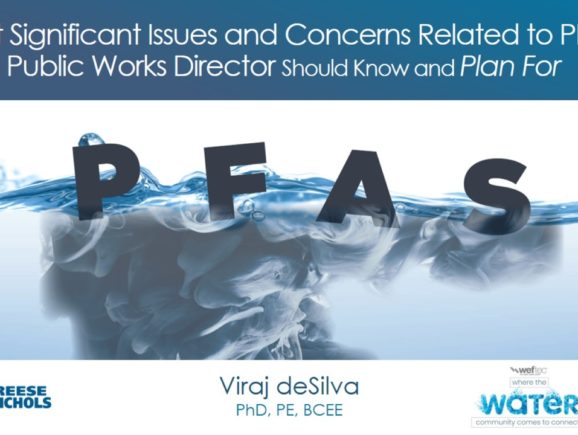EPA Proposes New PFAS Regulations for Drinking Water
Two years after the EPA published its 2021 decision to regulate per- and polyfluoroalkyl substances (PFAS) under the Safe Drinking Water Act, the agency has proposed new federal limits for PFAS in drinking water.
The proposed National Primary Drinking Water Regulation, announced March 14, would set standards for six PFAS and require public utilities to monitor their water systems for these chemicals and take action to reduce them. The proposed rule will be published in the Federal Register and go through the public comment process before being finalized, which the EPA expects to occur by the end of 2023.
The proposal would set limits of 4.0 parts per trillion (ppt) for PFOA and PFOS, two types of PFAS commonly found in drinking water. Four other PFAS — PFHxS, PFNA, PFBS and GenX — would be subject to different maximum contaminant levels based on a hazard index calculation.
These new limits could significantly impact public drinking water systems that are vulnerable to PFAS contamination, manufacturers and users of PFAS, and downstream distributors.
To help with public understanding of the proposal’s impacts, the EPA is holding webinars on March 16 and March 29. A public hearing is scheduled for May 4; registration is required, and April 28 is the last day to register to speak.
Read more about the proposed regulation:
- Proposed PFAS National Primary Drinking Water Regulation
- Biden-Harris Administration Proposes First-Ever National Standard to Protect Communities from PFAS in Drinking Water
In addition to the proposed new NPDWR on PFAS, EPA is also moving toward finalizing its rule designating PFOA and PFOS as CERCLA “hazardous substances.” This rule would create new reporting obligations for spills and have other impacts, including:
- Adding more sites to the National Priorities List
- Increasing costs at sites currently being studied and remediated if the parties are required to address PFOA and PFOS
- Potentially reopening existing Superfund sites if EPA determines that previously completed remedial actions no longer protect human health and the environment
What Utilities Can Do Now
- Sign up for an EPA webinar on March 16 or March 29.
- Start considering how PFAS monitoring and removal would fit into your budget plans.
- Monitor the EPA’s May 4 public hearing.
How Freese and Nichols Can Help
With our team’s expertise and experience in environmental science and water treatment, we can assist you with PFAS regulatory compliance, testing, remediation, planning/funding and program management.
To learn more, contact David Jackson, david.jackson@freese.com, or Viraj deSilva, viraj.desilva@freese.com



